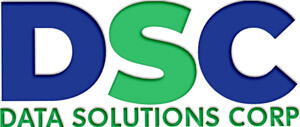Keeping track of expiration dates on the tens of thousands of products in your facility is a daunting task. Using proper stocking and product rotation methods helps minimize the risk that an outdated item will make its way into a patient. However, it only takes one publicized event to sully the reputation of a facility and its staff, resulting in high legal fees and settlement costs. https://www.mobileaspects.com/3-dangers-of-expired-medical-devices/
Recommended steps to minimize the risk of outdated product:
- Check the dates of new product coming into your facility as it is received. If it is near the end of its shelf life when receiving it, refuse the product.
- Make sure proper product rotation procedures are being followed. Consider using a 2-Bin system in appropriate areas for high-volume low-cost items. For low-volume high-cost items, develop a system where the expiration date is more prominently displayed. Colored labels, Use First labels, etc. are effective methods to alert staff to this safety concern.
- Create accurate PAR levels/ MIN-MAX levels. If you are turning over your stock in an efficient and timely manner, you will minimize the length of time it sits on the shelf, reducing the risk of expiring. Periodic review of your PAR/MIN/MAX levels must be done to reflect seasonal adjustments and changes in use preference.
Where do outdates hide?
In Plain Sight
-
- Even high traffic areas will contain slow moving items. These items are most at risk of falling out of date before use. Periodic date checks and additional labeling will help your staff stay on top of this. Create documentation attached to the section to show when the last date check was completed, and have the person conducting the check sign and date this.
- Storage Cabinets (Pyxis/Omnicell/etc.) If used properly, these cabinets usually contain minimal stock allowing for proper rotation. However, many of these cabinets are not being used as designed, becoming over stocked and improperly rotated. The more stock you put into a slot, the more difficult it becomes to rotate that stock. If you are committed to using these cabinets properly, periodic cleaning, resetting of perpetual count values, and a manual review of expiration dates is needed. If you are not planning to use these expensive cabinets as intended, consider replacing them with a 2-Bin system.
Out of Sight, Out of Mind
-
- Operating Rooms – Walk into any operating room in most hospitals and you will find potential sources for outdates. Desk drawers, cabinet drawers, stainless steel carts with drawers and other catch-all places are often filled with unused medical supplies from procedure packs. OR staff will squirrel this away for possible use in future procedures rather than return it to stock. In reality, this stock is rarely used and just sits there, forgotten until it expires. This represents a lost opportunity as well as an increased cost to purchase unnecessary replacement stock. Policies to prohibit this practice should be instituted and enforced. Periodic inspections should be instituted as well.
- Procedure Carts – Doctor’s Carts – These are also locations where unused product hides and expires. Periodic inspection, cleaning, reorganization, and purging of non-standard supplies should be instituted and documented. A detailed list of approved product and quantities of each should be attached to the cart and updated as needed.
- Supply closets – look for unmarked boxes and bags of RTS (Return To Stock). Getting unused items out of the OR is a good start, but it must get back on the shelf to be effective. Don’t let these returns build up. If that happens, the likelihood of that product “disappearing” is high! Insist that RTS stock is rotated back into stock daily and processed in a timely fashion.
- Warehouse – Every warehouse has places where discontinued stock goes to die. It may be in a little used corner, upper pallet rack, or behind other product. It may be product that was received in error that couldn’t be returned. In some instances, publications have been made obsolete by newer printings but fail to be removed from stock. Quarterly reviews should be made of every rack and pallet to make sure only needed stock is being stored. Excess or unnecessary stock can be sold, donated, or disposed of. Misplaced stock will be recovered and available for use. The space freed up will allow for improved organization and efficiency.
https://www.datecheckhealth.com/what-to-do-with-expired-medical-supplies/ - Consignment Product – While this may be the responsibility of the Consignment Vendor, how certain are you that they are inspecting or pulling outdates as provided for in their contracts? How often are you processing return and replacements due to expired product? If an outdated implant is installed into a patient in your care, you will be dragged into a costly lawsuit, expensive reparations, and damage to your hospital’s reputation. Trust but Verify!
If you suspect that your facility might have an issue with outdates, contact us at DSC. We will talk to you about your specific concerns and help you find a safe, affordable solution.
![]()

